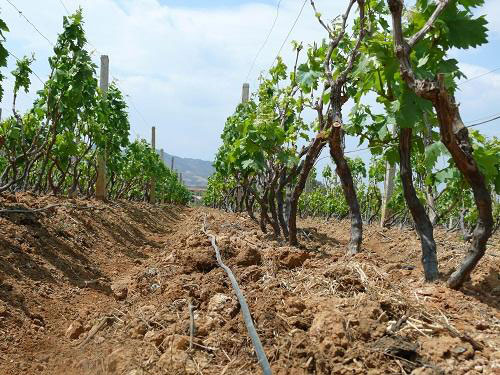
Introduction to fruit tree drip irrigation for water-saving irrigation
1、 The characteristics of drip irrigation
1. Low irrigation volume and short irrigation cycle. The general flow rate of the drip head is 2 to 12 liters per hour, and the irrigation interval varies depending on the type of fruit tree, usually once every 3-10 days.
2. Locally moist soil. Drip irrigation only moistens the soil near the roots of crops and does not damage soil structure. In humid areas, soil water, heat, air, and nutrients are in good condition, reducing soil surface evaporation and saving water.
3. Low work pressure. The working head of the drip head is 7-10 meters.
4. Fertilization can be combined to accurately deliver the required fertilizer to the roots at different stages.
2、 A complete drip irrigation engineering system usually consists of four parts: water source, head control hub, pipeline network (water transmission and distribution pipeline) system, and sprinkler.
1. The water source is very abundant, and rivers, lakes, canals, and springs can all be drip irrigation sources. However, it is not advisable to use excessive pollutants as a water source, otherwise it will make the water purification equipment too complex. It can even cause blockages in drip irrigation systems.
2. Head Hub. The head of drip irrigation work usually includes water pumps, power machines, control valves, water purification devices, fertilization devices, measurement and protection equipment.
3. Pipeline network system. The pipeline network of drip irrigation projects generally consists of main pipes, branch pipes, and capillary pipes.
4. Water dispenser. The irrigator is installed on the capillary or connected to the capillary through a connecting small tube.
3、 When planning and designing drip irrigation projects, the first step is to survey the designed area and plot, collect relevant information such as geography, terrain, soil properties, water source conditions, meteorological conditions, fruit tree types, cultivated spacing between rows, trees, yield, etc. Based on this, plan and design. The layout of the system is usually preliminary on a topographic map, and then modified by comparing it with the actual terrain.
4、 System layout
1. The determination of the location of the head hub is mainly based on the principle of investment saving and easy management. Generally, the first hub is combined with water conservancy projects.
2. The arrangement of capillaries and irrigators should be based on the spacing between the rows of fruit trees planted. There are usually single row capillary linear arrangement, single row capillary annular arrangement, double row capillary parallel arrangement, and single row capillary with microtubule arrangement. The irrigator is installed on the capillary.
5、 The determination of drip irrigation system refers to the total amount of water irrigated for fruit trees throughout the year, the interval between irrigation times, and the number of times of irrigation.
6、 The working system of drip irrigation system is determined by two types of working systems: continuous irrigation and rotational irrigation. Continuous irrigation refers to the simultaneous supply of water to all pipelines in the system, while rotational irrigation refers to the division of branch pipes into several groups for rotational water supply. In this way, the investment, water source, and economic situation of the project are determined differently.
The benefits of drip irrigation in orchards:
1. Conventional flood irrigation for water conservation and energy conservation requires approximately 440 cubic meters per acre of water, while micro spraying requires 100 cubic meters per acre.
2. The amount of labor required for labor saving is only 1/5 of the usual amount.
3. 70-80% of soil and fertilizer is ineffective water during flood irrigation, and about 30-50% of fertilizers run with water.
4. Reduce soil compaction.
5. Create a good microclimate in the field, create a night dew effect, increase the temperature difference between day and night, and improve the quality of fruits.
6. Stable soil moisture supply and fruit production
| Previous:Inlaid labyrinth drip irrigation pipe | next:Inlaid labyrinth drip irrigation pipe |






